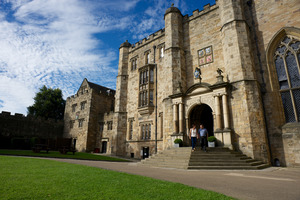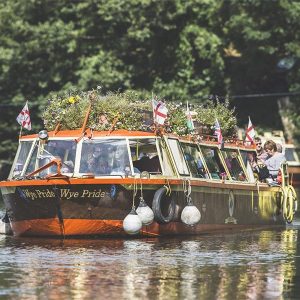The Essential Guide
There’s no doubting the UK has more than its fair share of historic universities. There’s Oxford and Cambridge, York with its tangle of quaint cobbled streets, St Andrews Scotland’s oldest university and of course Durham, home to one of the finest cathedrals in the world. If you’re lucky enough to have a child, grandchild or in my case god-daughter (Camilla, now in her final year at Durham) at one, you have the perfect excuse to visit and explore some of the country’s finest cities at the same time. Spoil them with meals out and treating their friends to rounds of drinks whilst you get to see the beautiful surroundings that students often take for granted. Here’s our guide to the Top 5 places a silver traveller should visit in Durham, all easily doable over a weekend.
Durham Cathedral
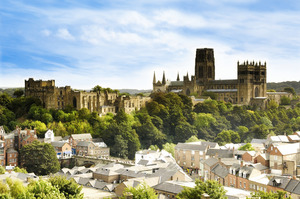 A UNESCO World Heritage Site with breath-taking Romanesque architecture, exquisite stained glass, the Shrine of St Cuthbert and resting place of St Bede. In 2013, the cathedral was voted the UK’s number one landmark in the travellers ‘choice attraction awards, organised by Trip Advisor whilst Bill Bryson called it the finest cathedral on the planet. A highlight is walking the 325 steps to the top of the tower. You do need to be relatively fit as the climb is quite strenuous and the upper part of the stone spiral staircase very narrow. However at the top, you’re rewarded with fabulous views of the city, the River Wear below and County Durham beyond.
A UNESCO World Heritage Site with breath-taking Romanesque architecture, exquisite stained glass, the Shrine of St Cuthbert and resting place of St Bede. In 2013, the cathedral was voted the UK’s number one landmark in the travellers ‘choice attraction awards, organised by Trip Advisor whilst Bill Bryson called it the finest cathedral on the planet. A highlight is walking the 325 steps to the top of the tower. You do need to be relatively fit as the climb is quite strenuous and the upper part of the stone spiral staircase very narrow. However at the top, you’re rewarded with fabulous views of the city, the River Wear below and County Durham beyond.
Durham Castle
The great thing about Durham is its size, it’s tiny with everything very close by, so just short hop from the cathedral and sitting at the heart of Durham’s World Heritage site is the castle. The castle is a registered museum as well as a vibrant living and working community, it has been occupied continuously since the 11th century and is now home to the students of University College, the founding college of Durham University. Over 100 students are resident during the term and in view of this, entrance to the public is by guided tour only. The castle has limited wheelchair access, so it is advisable to call in advance for details.
Crook Hall and Gardens
A short walk from the cathedral is a 13th century private home and idyllic English Garden, described by Country Life as having ‘history, romance, and beauty’. 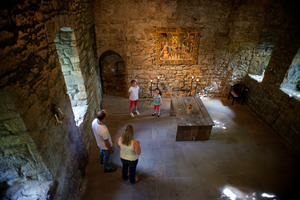 There’s a walled garden and then a secret walled garden, a Shakespeare garden, cathedral garden and even a silver and white garden. Not sadly something to honour us Silver Travellers but a garden to celebrate a twenty fifth wedding anniversary but what a lovely idea. There are hundreds of spring bulbs in the garden including snowdrops, white cyclamen, hyacinth, daffodils and tulips. White primula and buddleia, roses and also white pansies add to the theme. William Wordsworth and John Ruskin both visited the gardens for quiet contemplation, something I too would suggest. The hall and gardens are an ideal and relaxing tea stop after a tour of the Cathedral and Castle. However, it should be noted that there are some steep steps and deep slopes throughout and due to the historic layout of the Grade 1 listed building, access for wheelchair users may be difficult.
There’s a walled garden and then a secret walled garden, a Shakespeare garden, cathedral garden and even a silver and white garden. Not sadly something to honour us Silver Travellers but a garden to celebrate a twenty fifth wedding anniversary but what a lovely idea. There are hundreds of spring bulbs in the garden including snowdrops, white cyclamen, hyacinth, daffodils and tulips. White primula and buddleia, roses and also white pansies add to the theme. William Wordsworth and John Ruskin both visited the gardens for quiet contemplation, something I too would suggest. The hall and gardens are an ideal and relaxing tea stop after a tour of the Cathedral and Castle. However, it should be noted that there are some steep steps and deep slopes throughout and due to the historic layout of the Grade 1 listed building, access for wheelchair users may be difficult.
Botanic Garden
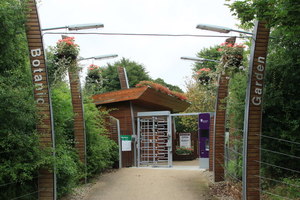 The 10 acre Botanic Garden is set amongst beautiful mature woodlands on the southern outskirts of the city. Wander through the alpine garden, winter garden, bamboo grove, glass houses and recently developed woodland garden and wild flower meadow. As well as being a beautiful natural environment the Botanic Garden also hosts a number of events throughout the year and is another good place for a coffee. My two biggest impressions of Durham were firstly the magnificent setting of the Cathedral and Castle, standing side by side on a prominent hill-top site and that the city has literally dozens of excellent tea rooms and coffee shops.
The 10 acre Botanic Garden is set amongst beautiful mature woodlands on the southern outskirts of the city. Wander through the alpine garden, winter garden, bamboo grove, glass houses and recently developed woodland garden and wild flower meadow. As well as being a beautiful natural environment the Botanic Garden also hosts a number of events throughout the year and is another good place for a coffee. My two biggest impressions of Durham were firstly the magnificent setting of the Cathedral and Castle, standing side by side on a prominent hill-top site and that the city has literally dozens of excellent tea rooms and coffee shops.
Beamish – The Living Museum of the North
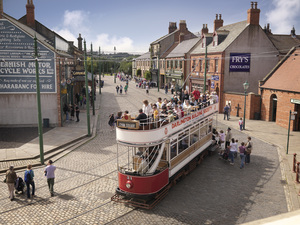 Durham can essentially be done in a day or two, so I’d also suggest a visit to nearby Beamish – The Living Museum of the North. Just nine miles away, Beamish a large open air museum set in 300 acres of countryside is a place where you can discover what life was like in North East England in the 1820s, 1910s and 1940s and experience first-hand how the Industrial Revolution transformed agricultural life in the region. Free wheelchair hire is available from the entrance building, visitors are welcome to use personal motorised scooters whilst an accessible bus provides transport around the site and accessible toilets are located in most areas.
Durham can essentially be done in a day or two, so I’d also suggest a visit to nearby Beamish – The Living Museum of the North. Just nine miles away, Beamish a large open air museum set in 300 acres of countryside is a place where you can discover what life was like in North East England in the 1820s, 1910s and 1940s and experience first-hand how the Industrial Revolution transformed agricultural life in the region. Free wheelchair hire is available from the entrance building, visitors are welcome to use personal motorised scooters whilst an accessible bus provides transport around the site and accessible toilets are located in most areas.
For more details on Durham visit http://www.thisisdurham.com/
Petra stayed at Durham Marriott Hotel Royal County
